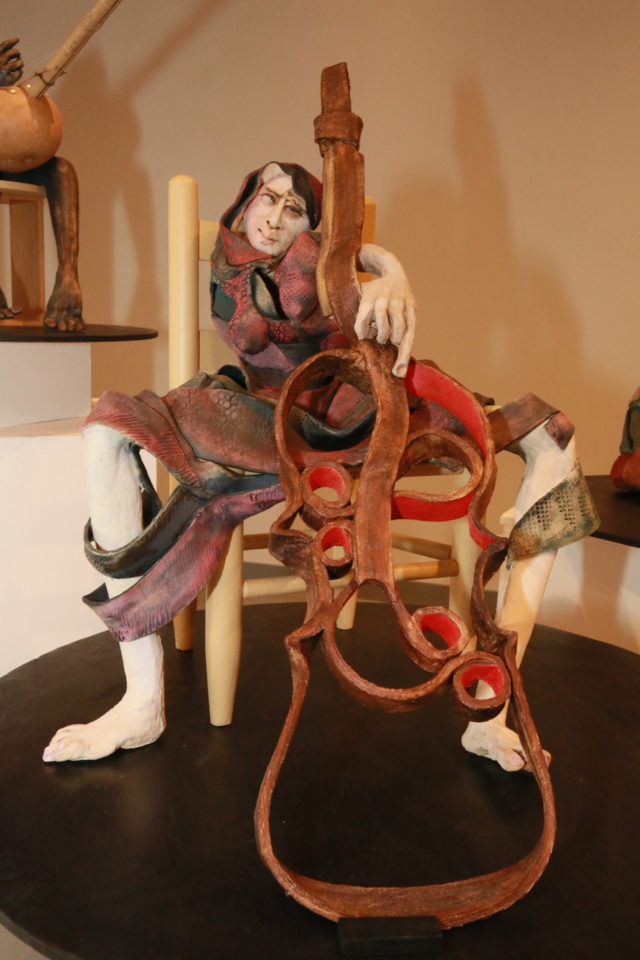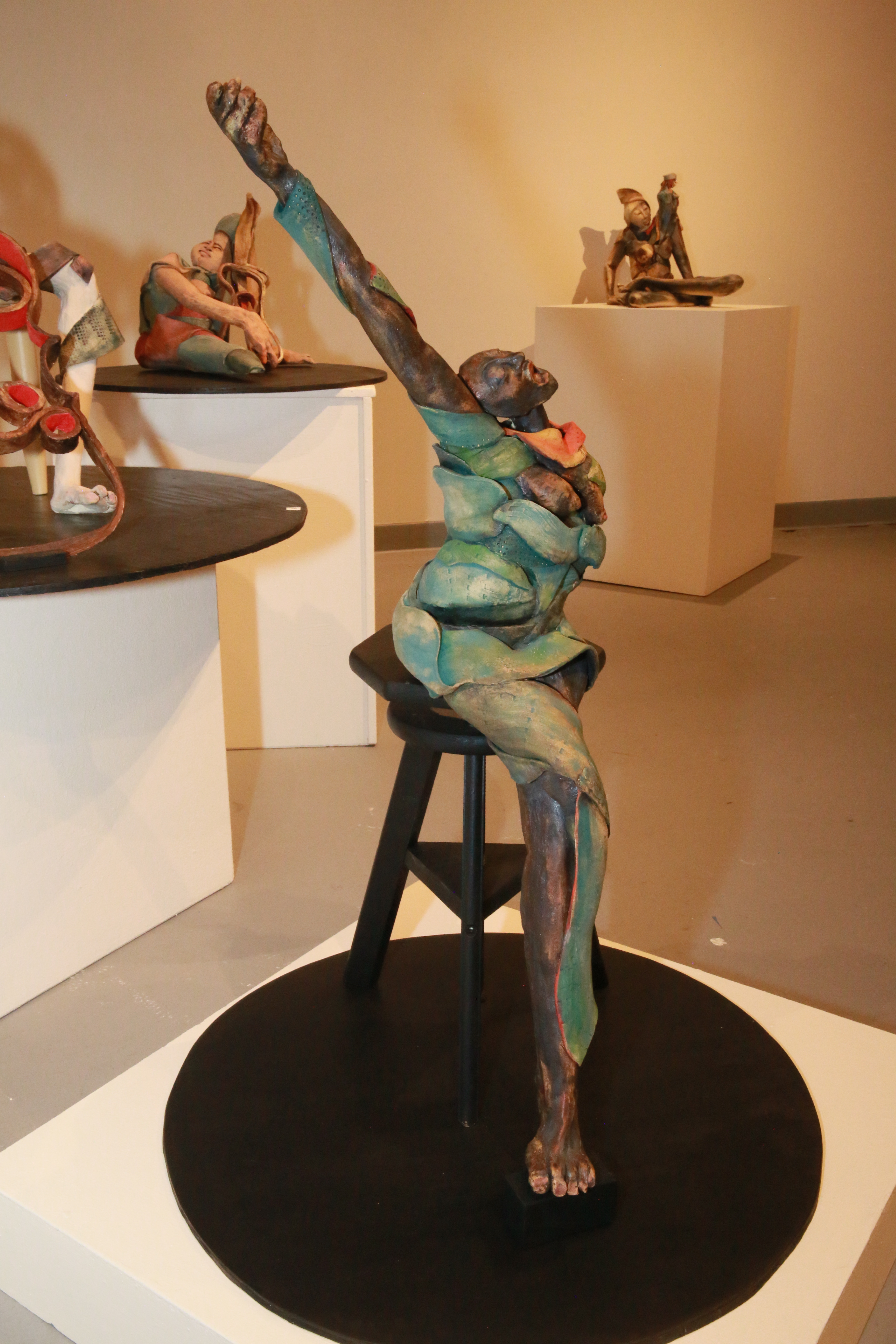
Sitting in the corner of the Dairy Arts Center’s McMahon Gallery, the band is set to play. The all-women ensemble features a diverse set of instruments: a cello, guitar, bass, didgeridoo, an African ngoni and drums. They’re led by a singer who stretches her arm in the middle of a powerful note.
Sculpted in clay, each member of the group depicts a moment of passion, but stays silent.
“Can you imagine what this cacophony would sound like?” artist Leona Lazar asks with a laugh. “It would be very creative.”
Through July 30, Divas showcases a variety of Lazar’s sculptures, featuring characters from a ragtag group of musicians to dancers to a Chinese empress. Lazar approaches her figures with abstraction, emphasizing emotion or expression to create sculptures full of movement.
With an interest in art from an early age, Lazar’s own creations took a backseat as she pursued a career in producing museum exhibits. But on the side she continued to attend workshops and learn about sculpture. When she retired five years ago, she became a full-time artist.
Her chosen medium is paper clay, which, as its name suggests, is clay infused with paper. Lazar calls the medium forgivable and less temperamental than normal clay. It makes the clay stronger and adds an element of plasticity, letting her craft detail and create walls that can be as thin as paper. She’s attracted to the “pulse” the material gives the work.
“If you notice my figures, there’s a great deal of motion and energy, and that’s because of the strength of the clay,” she says. “And so when I’m building, it has a lot of latitude and flexibility to it.”
Lazar has always been intrigued by the human figure. But instead of creating a perfect replica, she focuses on a feeling and then experiments with how to personify it with exaggerated body gestures. Always working organically, Lazar follows her intuition to create something conceptual.
“I abstract down to what I think is the essence of the piece or the emotion of what I want to communicate. I use distortion, and I take a huge amount of license,” she says. “You never see people standing [straight and stiff], nothing is static. There’s vitality to everything. …
“What is it that captures the essence of a human being — that’s what I’m trying to get to,” she continues. “So then you as the viewer can relate to the piece on a personal level.”

Lazar’s source work touches on varied subjects, from politics to mythology to history to her personal life. She works with themes that are meaningful to her, connecting to them through her art. Though her inspiration changes, Lazar sculpts mainly women.
“I think it’s because I can relate to a woman not only physically but emotionally. I know what it is to be a woman,” she says. “All of my women are vulnerable but very, very strong.”
She’s explored women in power such as the “The Dowager Empress,” who ruled over China in the late Qing Dynasty, and she’s worked with the myth of the phoenix in “Whistling Messenger,” both of which are featured in the Dairy show. Also included is Lazar’s series on immigration. Moved by the stories she saw on the news, Lazar began wondering what strict immigration policy does to women and their children. She wanted to showcase the resilience and strength of this community.
“I thought, these are such beautiful people,” she says. “I want to show them with the pride they have in their cultures.”
But when making more pieces for the Dairy’s show, in an effort to play with a more light-hearted topic, Lazar turned to one of her passions: music. As many artists do, Lazar listens to music in her studio. So she paid attention to how music affected her emotionally and how it seeemed to affect the people playing it.
“I started to think, how do the musicians themselves relate to the music that they’re making? It’s almost as if they become the music,” she says. “I tried to show the affection and the intensity that the music must be bringing to them, just as it brings to me as the visual artist.”
For this show, Lazar listened to a variety of music from jazz to classical to Bob Dylan. She also listened to music from around the world, as seen from her sculptures featuring a didgeridoo and ngoni, an African string instrument made from a gourd.
With serene, passionate faces, the sculptures capture the spirit of music.
“With these figures, I didn’t want them to be in cement,” she says. “I wanted them to have this fluid sense.”
It was also important for Lazar to do an all-women’s ensemble, which she says is not very common at most concerts. Furthermore, she wanted a blend of various cultures to highlight the joy of music and its vitality in every culture. Art has the power to transcend boundaries, and Lazar’s work serves as a reminder.
“We need to communicate, and we need to be recognizing each other,” she says. “One of the beauties of art is that it brings people together. Visual, music, literature, theater — art is that universal voice.”
On the bill: Divas. The Dairy Arts Center, 2590 Walnut St., Boulder, 303-440-7826. Through July 30.














